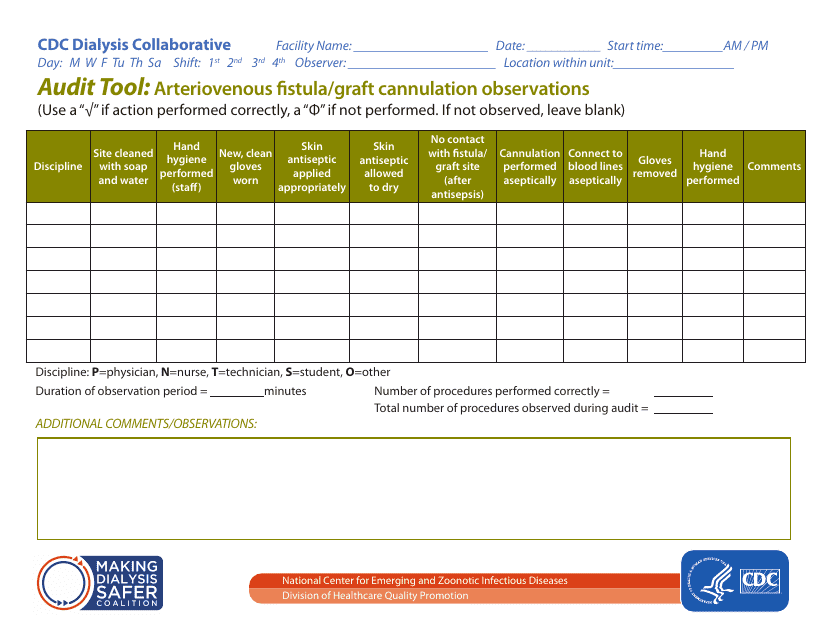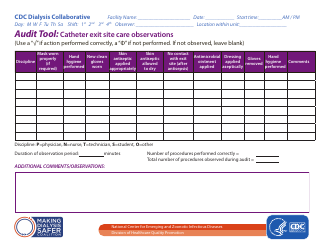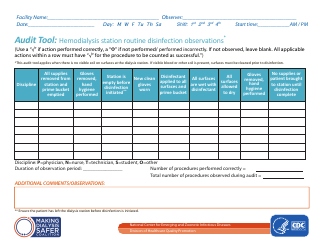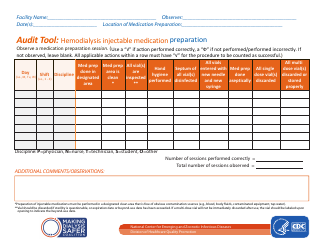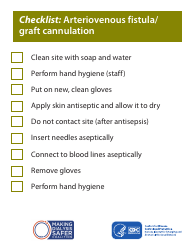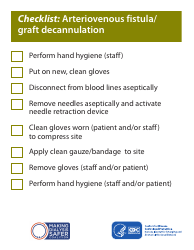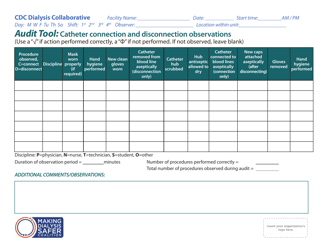Audit Tool: Arteriovenous Fistula / Graft Cannulation Observations
Audit Tool: Arteriovenous Fistula/Graft Cannulation Observations is a 2-page legal document that was released by the U.S. Department of Health and Human Services - Centers for Disease Control and Prevention and used nation-wide.
FAQ
Q: What is an arteriovenous fistula?
A: An arteriovenous fistula is a surgically created connection between an artery and a vein, typically in the arm, that is used for hemodialysis.
Q: What is an arteriovenous graft?
A: An arteriovenous graft is a synthetic tube that is surgically placed under the skin to connect an artery and a vein, also used for hemodialysis.
Q: What are cannulation observations?
A: Cannulation observations refer to the monitoring and assessment of the process of inserting needles or catheters into an arteriovenous fistula or graft for hemodialysis.
Q: Why are cannulation observations important?
A: Cannulation observations are important to ensure proper placement of the dialysis needles or catheters and to detect any signs of complications, such as bleeding or infection.
Q: Who performs cannulation observations?
A: Cannulation observations are typically performed by trained healthcare professionals, such as nurses or dialysis technicians.
Q: What should be observed during cannulation?
A: During cannulation, the healthcare professional should monitor for signs of bleeding, hematoma (collection of blood under the skin), infection, or any other complications.
Q: How often are cannulation observations done?
A: The frequency of cannulation observations may vary depending on the patient's condition and the healthcare facility's protocols. However, they are typically performed before, during, and after each hemodialysis session.
Form Details:
- The latest edition currently provided by the U.S. Department of Health and Human Services - Centers for Disease Control and Prevention;
- Ready to use and print;
- Easy to customize;
- Compatible with most PDF-viewing applications;
- Fill out the form in our online filing application.
Download a printable version of the form by clicking the link below or browse more legal forms and templates provided by the issuing department.
